Aboriginal and Torres Strait Islander lens perspectives.
By Jo-Anne Driessens - 2021 Mittelheuser Scholar-in-Residence. | 21 July 2023
Guest blogger: Jo-Anne Driessens - 2021 Mittelheuser Scholar-in-Residence.
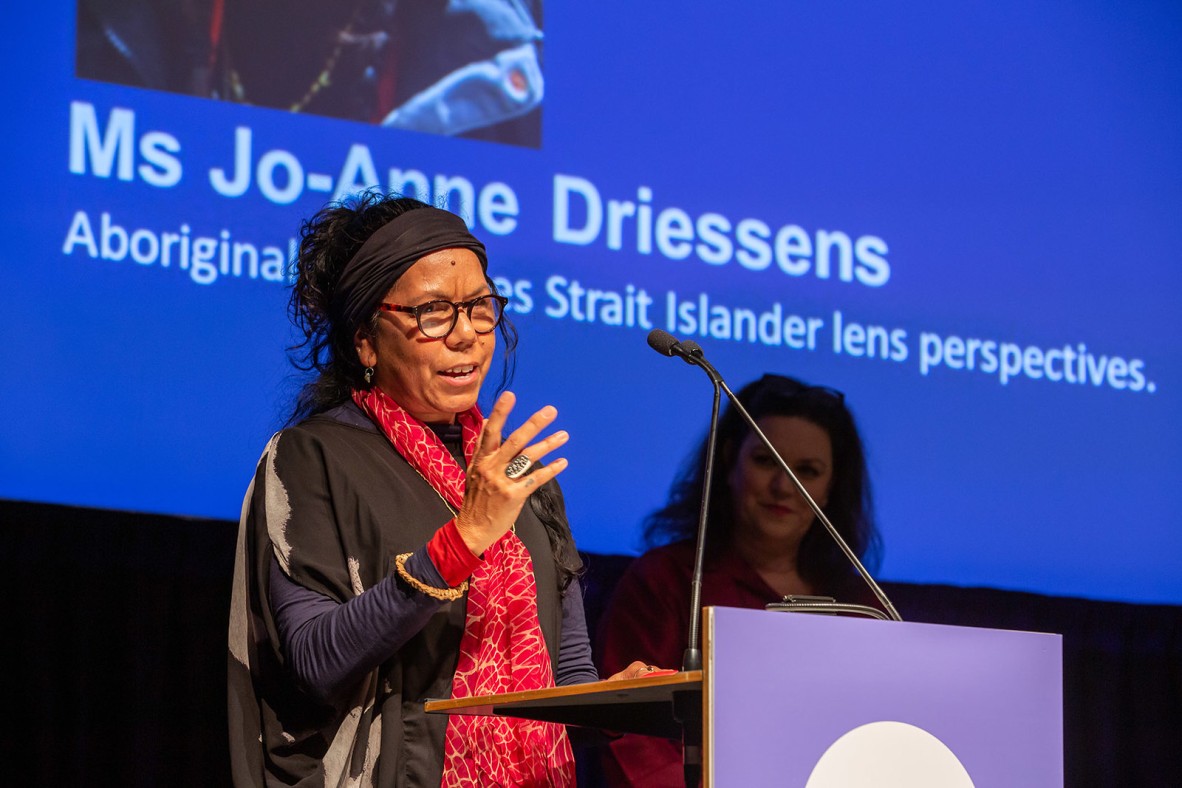
The 2021 Mittelheuser Scholar-in-Residence was awarded to Jo-Anne Driessens for her project Aboriginal and Torres Strait Islander lens perspectives. Photographer Stephen Henry. View more photos from the 2021 Queensland Memory Awards.
This project involved two main components, the first component was to identify the diverse representation of photographs of Aboriginal and Torres Strait Islander people taken by various photographers within State Library's collection. Historically the photographs acquired, collected or gifted into the State Library's collection have been captured by a number of early white settler photographers who were capturing the daily life and sometimes portrait (studies) of Aboriginal and Torres Strait Islander people. In more recent times, a number of photographs have been acquired from non-Indigenous photographers and while they still add value to the collection as a whole, this project was aimed towards identifying Aboriginal and Torres Strait Islander photographers throughout regional, remote and urban communities to assist and identify appropriate images from their own body of work into State Library's collection.
To do this it was important to provide a holistic view into the steps involved including:- utilise new and old community networks to identify active photographers (ongoing); understanding the cameras role and technical aspects; highlight the digital archive requirements; look at their own body of work and what is involved in identifying appropriate photographs for the collection; provide copyright and licensing workshop (ongoing); discuss the role of digital archive storage systems. The second component was to research and understand the domestic digital archive and database software systems relevant for freelance photographers and relevant to my initial awareness towards the duty of care of my own collection.
There were many phone calls with my blood Aunties to help provide guidance and advice around some of the early photography of Barambah and even though I have been working with these images since the 90’s I was still able to learn about new stories. The best part was how certain aspects of a memory are connected with a photo, prompting certain events or an incident even if it was minor was a really personal insight into more family and community stories that I was still learning about, even though it has been 30 years since I connected with my blood family. I often think of the State Library darkroom days when printing the hundreds of public print orders and the process alone often felt like it was not only preserving the image with accurate measurement of solutions and timings involved when printing or processing films, but how valuable photos are when reflecting with older family members and witnessing a mirroring of preserving stories and accurate accounts that occurred and also the timing of when these pieces of information are revealed to us throughout our lives. While a single photograph can lay quietly within a collecting institution and be preserved with the utmost dignity, until they reconnect with an actual person who remembers, then the photograph becomes a true measurement of time and memory.
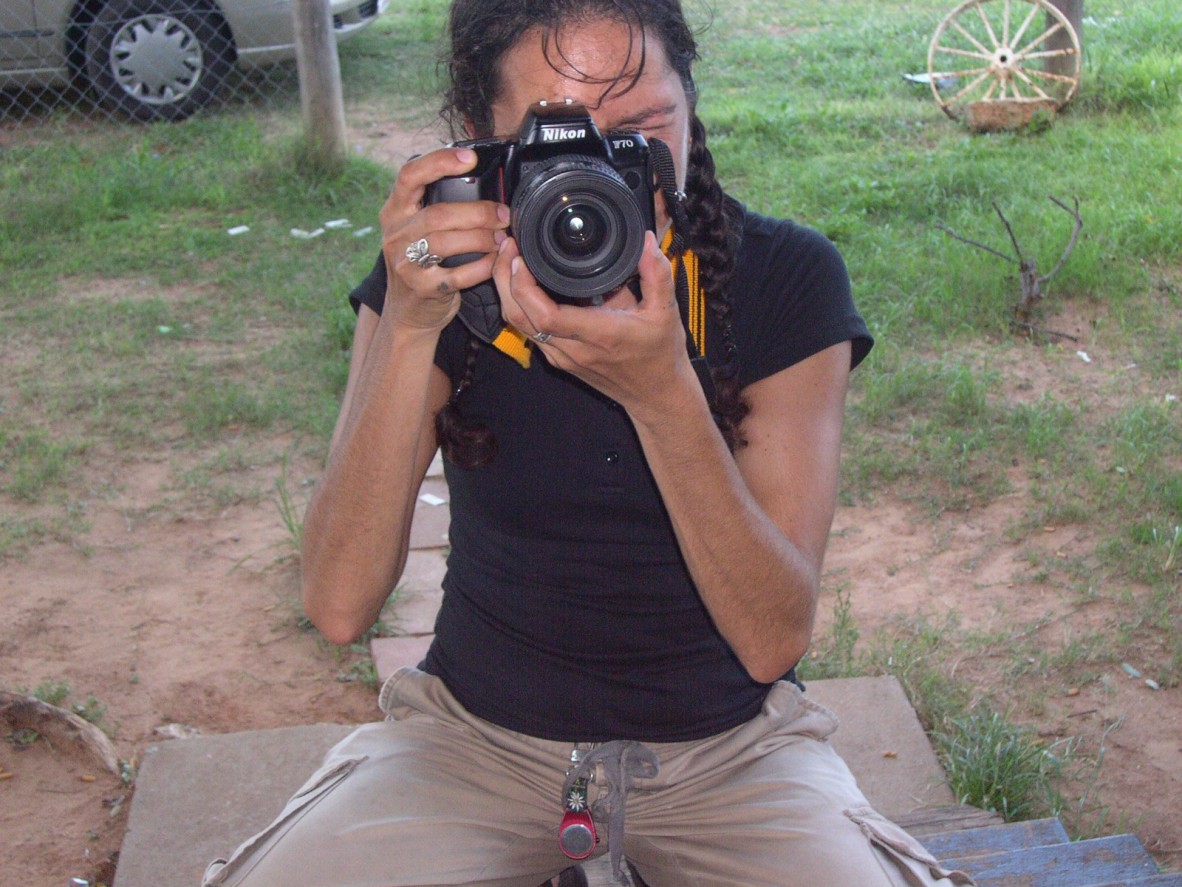
Jo-Ann Driessens taking photographs in Woorabinda, Queensland.
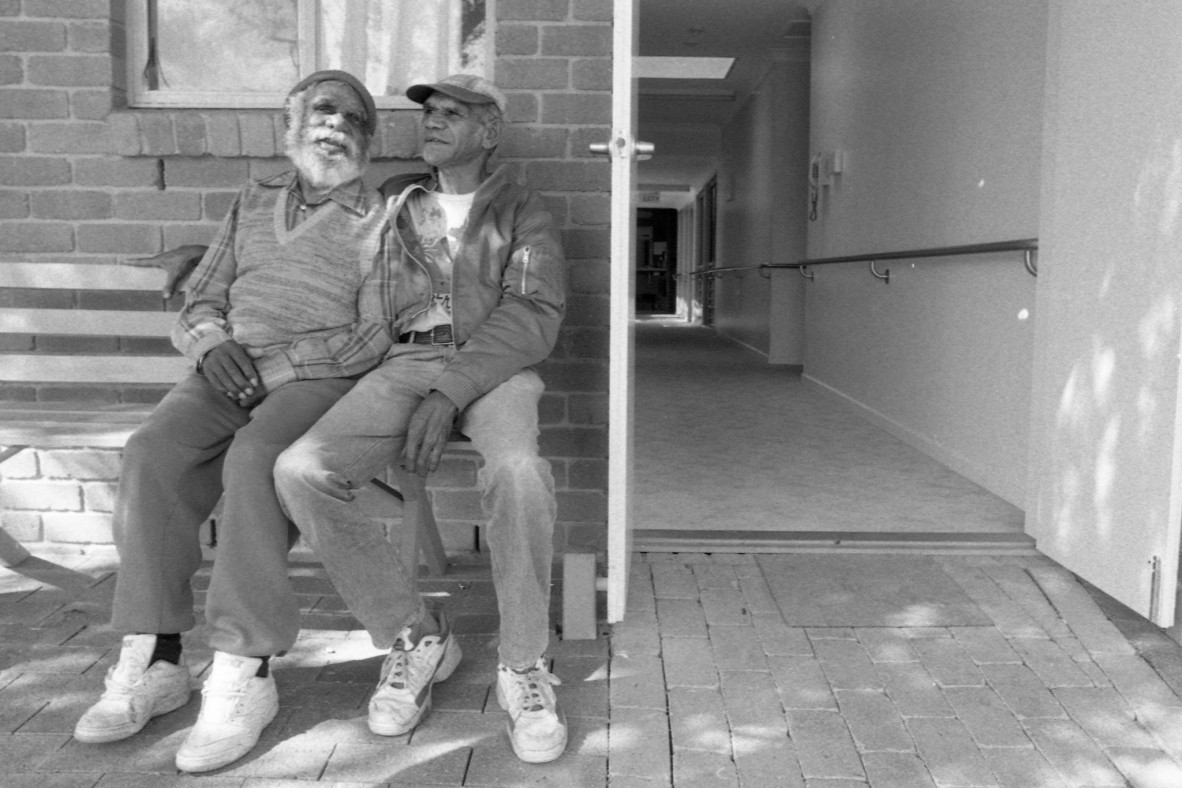
Aboriginal men at the Ny-Ku Byun aged care facility in Cherbourgopen_in_new, Jo-Anne Driessens (1997-2000). 30299 Jo-Anne Driessens Photographs, John Oxley Library, State Library of Queensland. Image number: 30299-0001-0010.
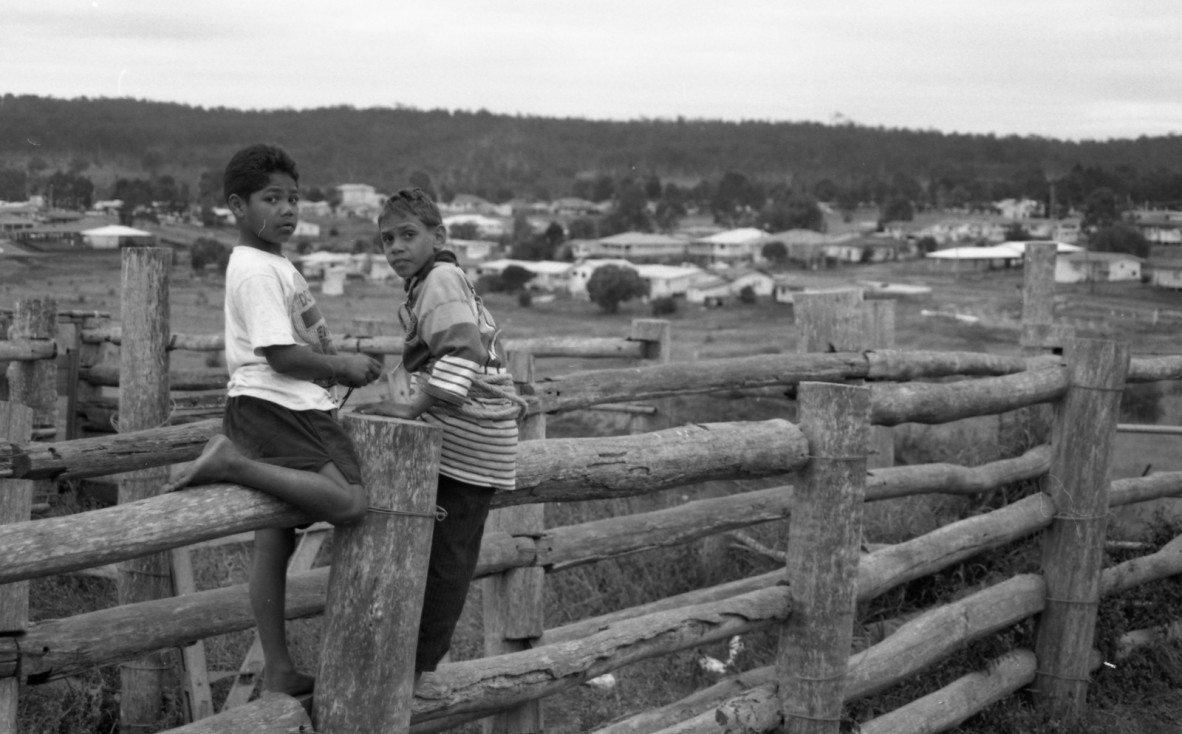
Boys in a cattle yard in Cherbourg, Queensland, 1998. 30299 Jo-Anne Driessens photographs, John Oxley Library, State Library of Queensland.
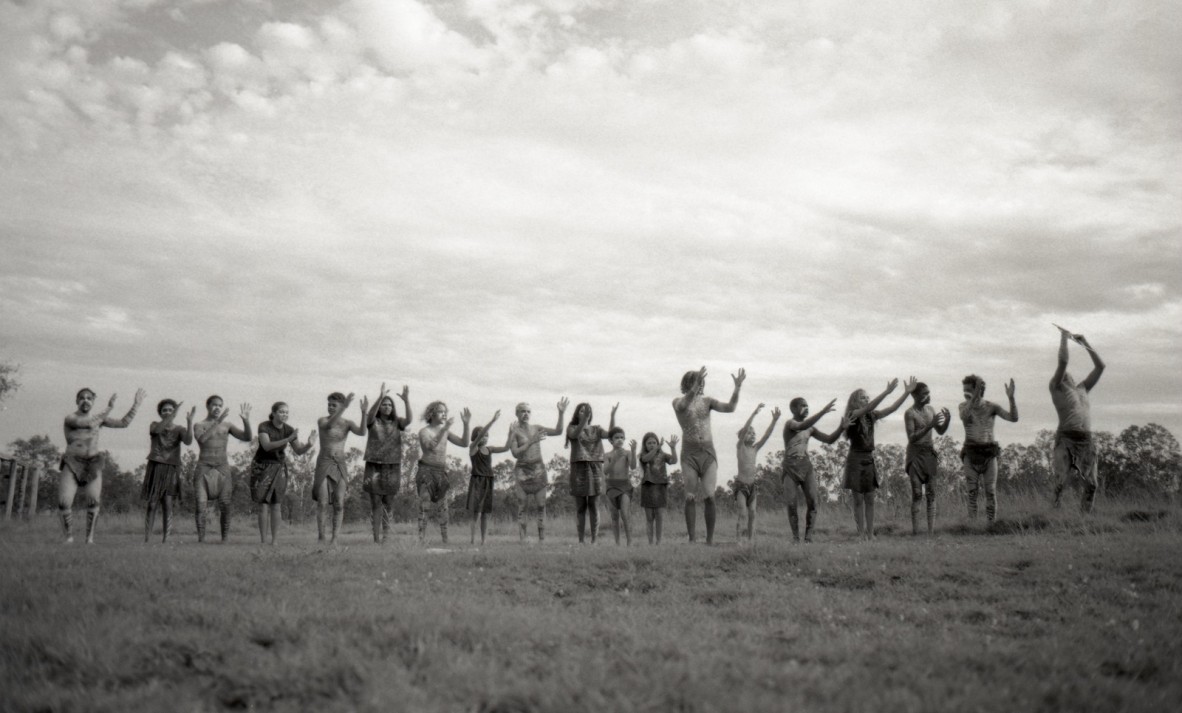
Aboriginal dancers rehearsing at the Jagera property in Coominya, Queensland, 1998. 30299 Jo-Anne Driessens photographs, John Oxley Library, State Library of Queensland.
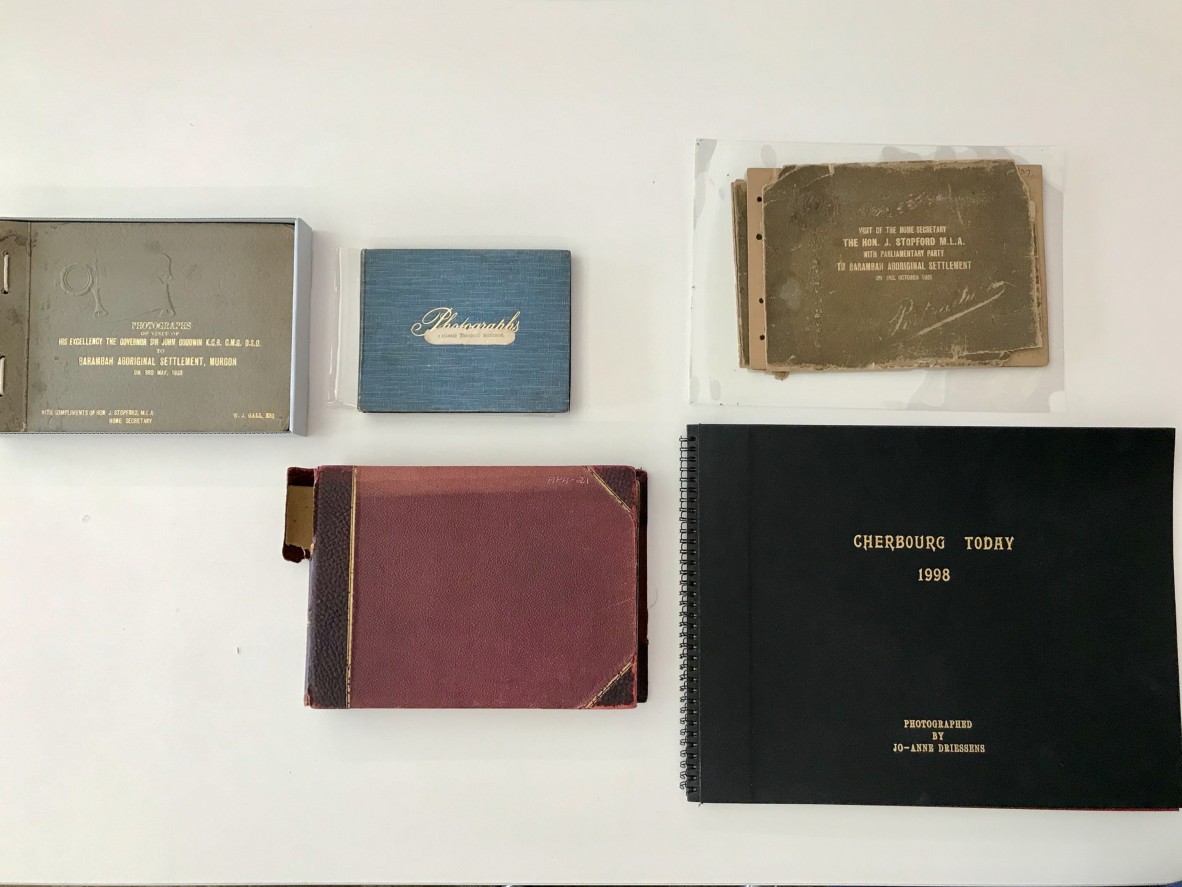
Historic photographic albums with First Nations content.
In the second component of this project I was also able to provide a deeper insight into the work that still needs to be provided across the GLAM (Galleries, Libraries, Archives and Museums) sector. During my research, I started my new role with Arts Law as Artists in the Black Coordinator and was able to bring in expert legal advice led by one of the Senior Solicitors who I now accompany to do copyright and Indigenous Cultural and Intellectual Property (ICIP) workshops, including a bespoke community workshop provided towards the end of the project which provided awareness for both participants (community) and State Library staff looking more deeply at Aboriginal and Torres Strait Islander lens perspectives and the role we can all partake in towards deeper understanding and engagement.
During the project I was able to assist with State Library's photography acquisition process of two Brisbane based photographers; Wayne Coolwell and Lewis James. Wayne Coolwell is a Mununjali person and former ABC journalist who travelled Nationally and Internationally recording the stories and voices of Aboriginal and Torres Strait Islander people and because I have known Wayne since the 90’s, the timing of this project was able to provide urgent support around his 40 years of analogue archive, including, film based photographs, film audio recording and tape interviews. Wayne’s work was ‘rescued’ from a hostile storage environment and is now sitting at the Cannon Hill Conservation-quarantine area, this process is ongoing due to the volume of work and Wayne is hoping to tour approx. 60 selected images to Palm Island, Yarrabah, Cooktown and Brisbane, pending funding outcomes.
Lewis James, was the second Indigenous photographer that I have been crossing paths with for a number of years and Lewis is an emerging active freelance photographer in Brisbane who now has the responsibility of a large volume of digital images captured across South-East Queensland and as far north as the Torres Strait. While I know Lewis, I still needed to explain in more depth the importance of the role that he is doing as a photographer and the role of State Library and the collecting aspects. Towards the end of the project, Lewis entrusted my suggestions and provided a USB of digital contemporary images of Brisbane marches and events for the Heritage team to select from and allow ongoing dialogue and future engagement.
In addition, being able to explore the digital storage system options, including understanding meta data for custom data bases within the domestic setting, provided many conversations between State Library's digital management staff and external IT industry, including National and global discussion around digital sovereignty and keeping places that provide password access for various cultural groups and their needs. With the project funding I was able to purchase a custom PC and storage system to allow the volume of my work to be added to over the years ahead and have a custom data base using a NAS setup specifically for this computer, which will allow me to locate and access files from remote locations and test different ways in field entry to update sensitive information eg: the passing of a person. Also track where image and files end up. This setup for this IT system will be an ongoing process with various testing including the sharing of the technical and costing aspects with photographers and community for broader awareness in storing of various forms of data including: archives, old family photos, family records. I am hoping to also test this with my blood family Guwa (Koa) records to assist with the best practice in sharing family records from a central storage system, utilising the password access, this is a work in progress.
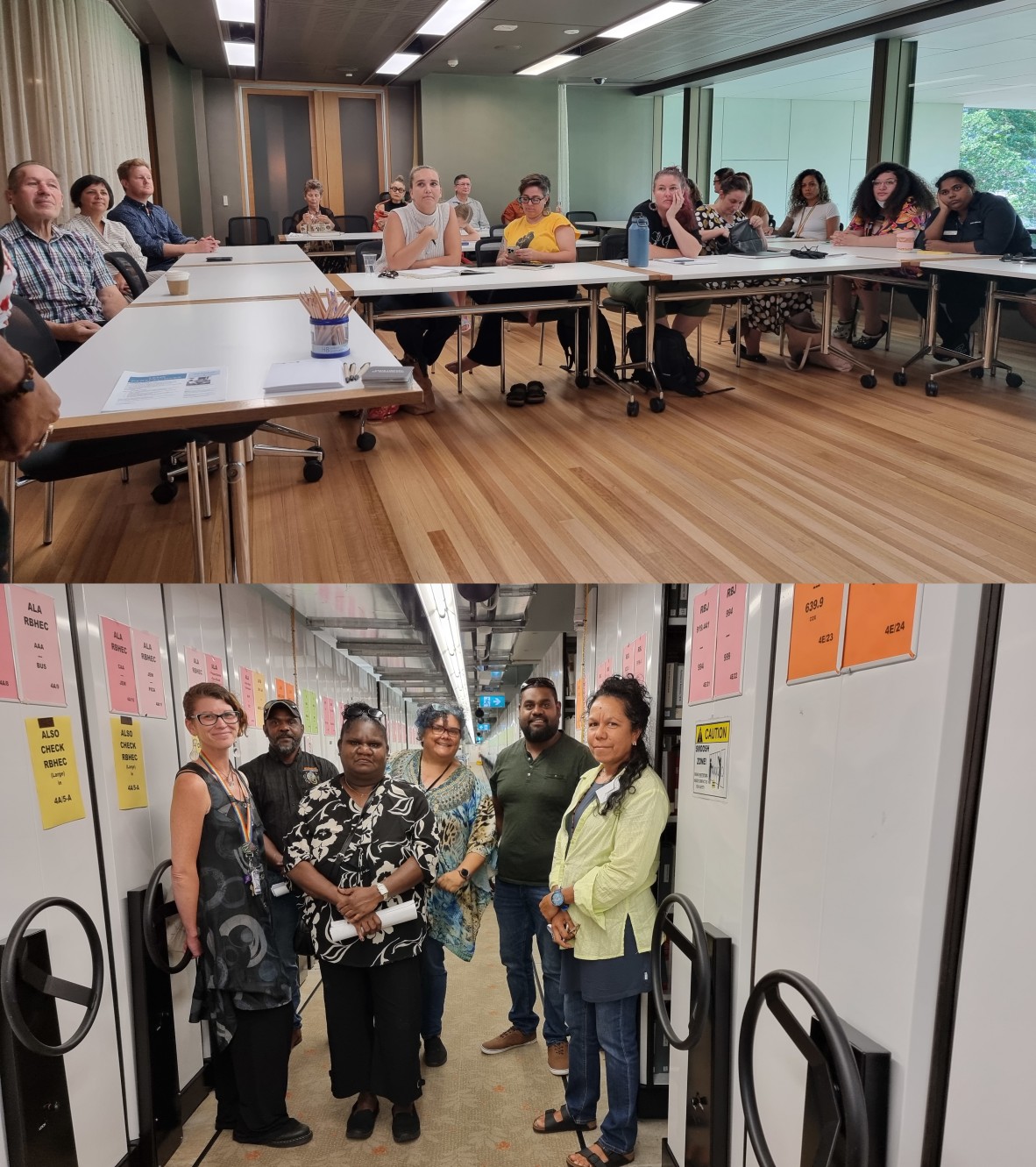
Jo's workshop at State Library, The role of the camera and archiving. March 2023. Tania Schafer, State Library of Queensland.
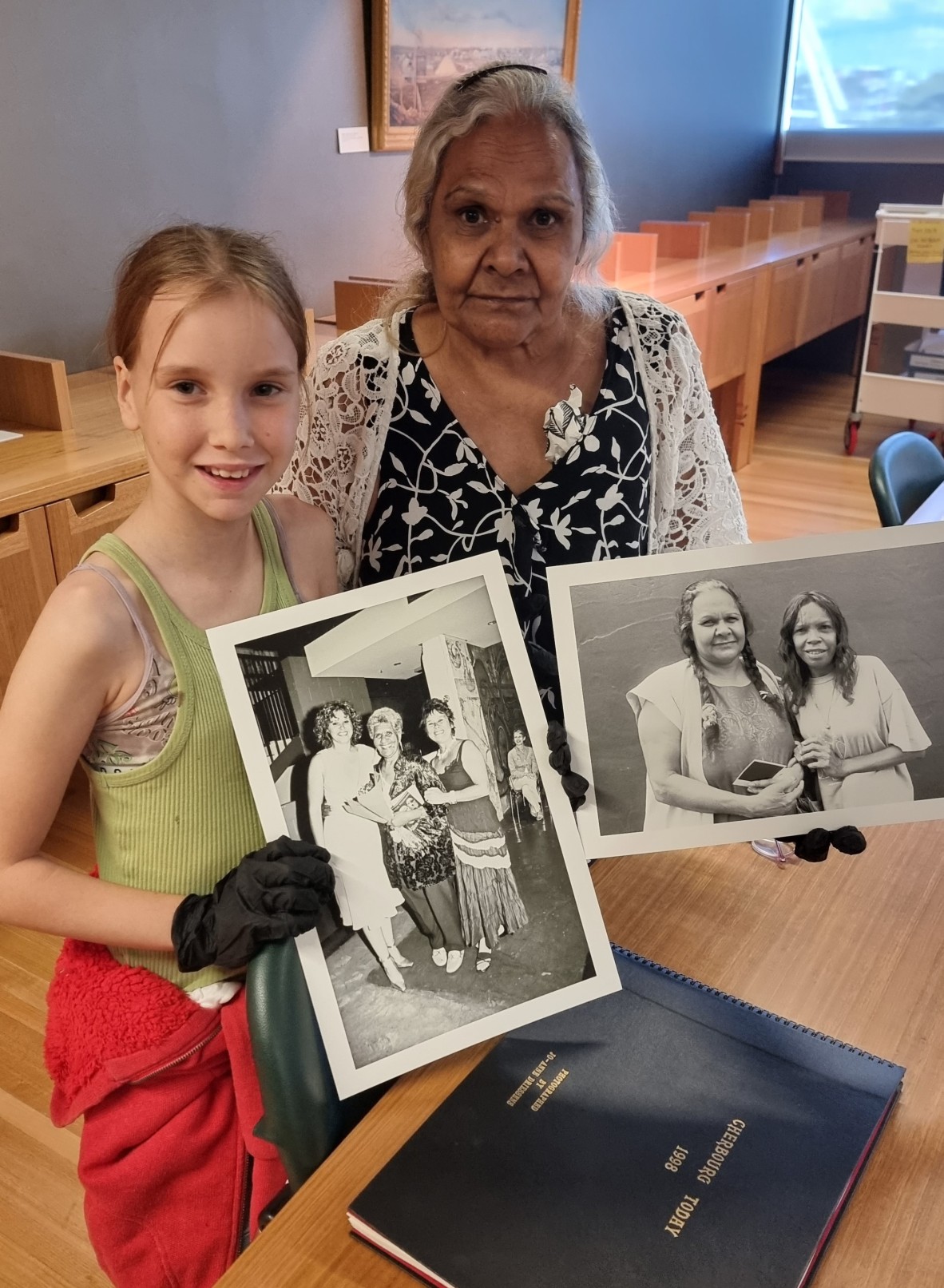
One of Jo's photography subjects revisiting a photograph taken of her with her Granddaughter. Tania Schafer, State Library of Queensland.
Overall the project provided a tangible way to engage with Aboriginal and Torres Strait Islander photographers and make them more aware of how they are able to contribute their work into State Library's collection. Community engagement has been an ongoing commitment of State Library, however it was important to build on existing and new relationships to ensure both parties (State Library staff & community) understand how images are used through the copyright and licensing agreement, this allowed a deeper understanding with long term positive experiences for Aboriginal and Torres Strait Islander community. These steps have also provided a platform for ongoing engagement and I am continuing to educate other photographers across these aspects.
Jo-Anne Driessens
- Watch Jo-Ann's talk about her project: Research Reveals: Aboriginal and Torres Strait Islander lens perspectives. To watch other talks by the 2021 Queensland Memory Fellows, see our Vimeo showcase.
- Read other blogs about Jo-Ann Driessens.
- View Jo-Ann Dressens photographs in the John Oxley Library collection.
Comments
Your email address will not be published.
We welcome relevant, respectful comments.